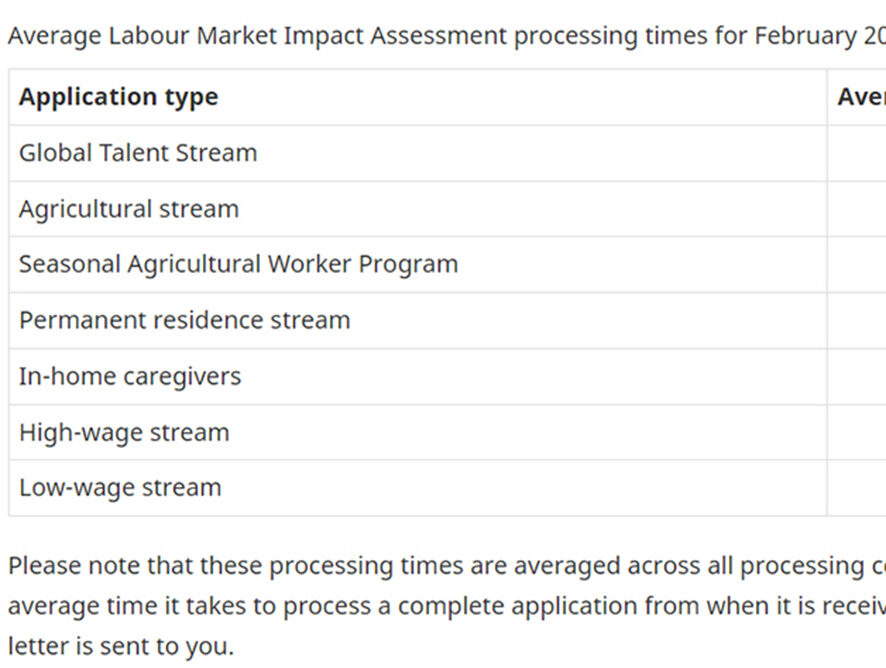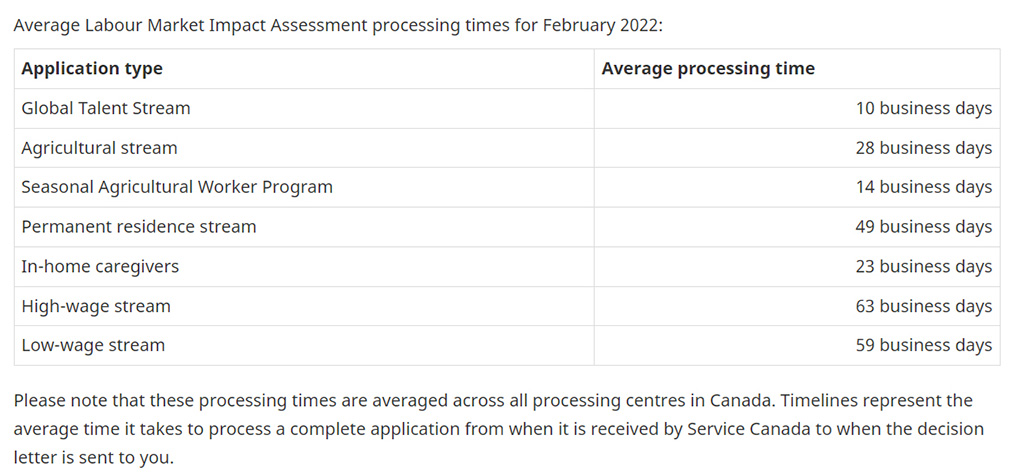Government of Canada, through the Minister of Employment, Workforce Development and Disability Inclusion, Hon. Carla Qualtrough announced the Temporary Foreign Worker Program Workforce Solutions Road Map. This is the government’s response to the increasing labour shortage nationwide, to enhance worker protections and to build a stronger workforce including pathways to permanent residency. They identified five key policy changes to be implemented in the coming weeks as part of the TFW program Workforce Solutions Road Map to address the current labour and skills shortage.
Effective immediately:
-There will be no limit to the number of low-wage positions that employers in seasonal industries, such as fish and seafood processing, can fill through the TFW Program. The maximum duration of these positions will be increased from 180 days to 270 days per year.
-Labour Market Impact Assessments (LMIAs) will be valid for 18 months, an increase from 9 months. (Prior to COVID-19, LMIA’s were valid for 6 months).
-The maximum duration of employment for High Wage and Global Talent Streams workers will be extended from two years to three years. This extension will help workers access pathways to qualify for permanent residency, enabling them to contribute to the workforce for the long-term.
Effective April 30:
-For seven sectors with demonstrated labour shortages, employers from the Accommodation and Food Services will be allowed to hire up to 30% of their workforce through the TFW program for low-wage positions for one year. All other employers will be allowed to hire up to 20% of their workforce through the TFW Program for low-wage positions until further notice, an increase from the former 10% cap for many employers.
-The Government will end the current policy that automatically refuses LMIA applications for low-wage occupations in the Accommodation and Food Services and Retail Trade sectors in regions with an unemployment rate of 6% or higher.
According to Statistics Canada, in 2020, temporary foreign workers made up less than 0.4% of the Canadian workforce and will continue to make up a small percentage of our workforce despite these changes. The Government of Canada will continue to carefully monitor the implementation and review the policies to ensure it addresses the labour shortage and that Canadian workers will not be displaced.
Service Canada encourages employers to submit LMIA applications online.
 If you have questions regarding the above article, you may contact Marjorie at info@mcncanadaimmigration.com
If you have questions regarding the above article, you may contact Marjorie at info@mcncanadaimmigration.com
Source: Employment and Social Development Canada
A word of caution: You should not act or rely on the information provided in this column. It is not a legal advice. To ensure your interests are protected, retain, or formally seek advice from a Regulated Canadian Immigration Consultant (RCIC) in good standing of CICC. The views expressed in this article do not necessarily reflect those of RCIC’s.



